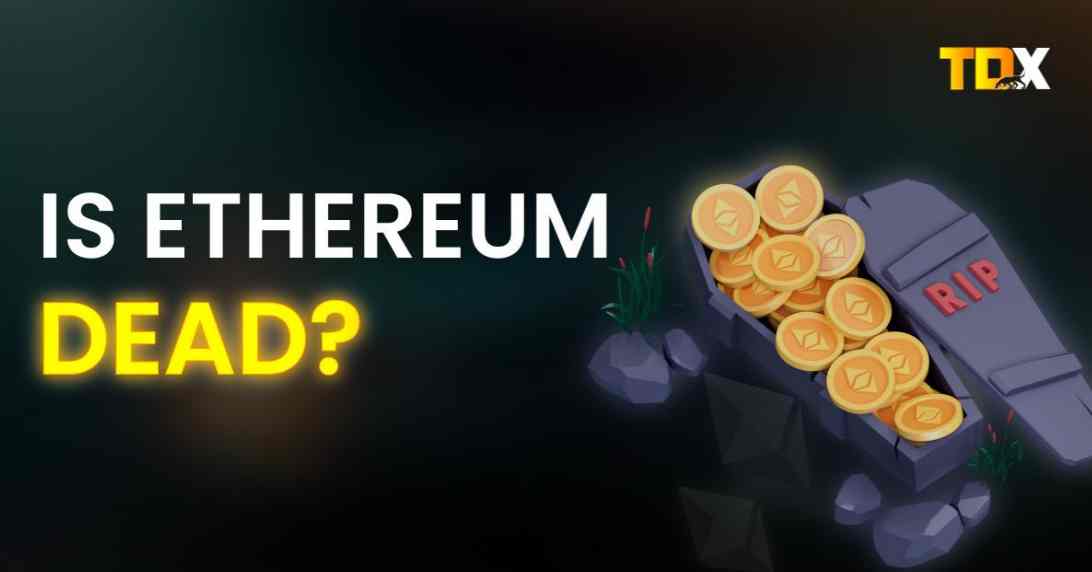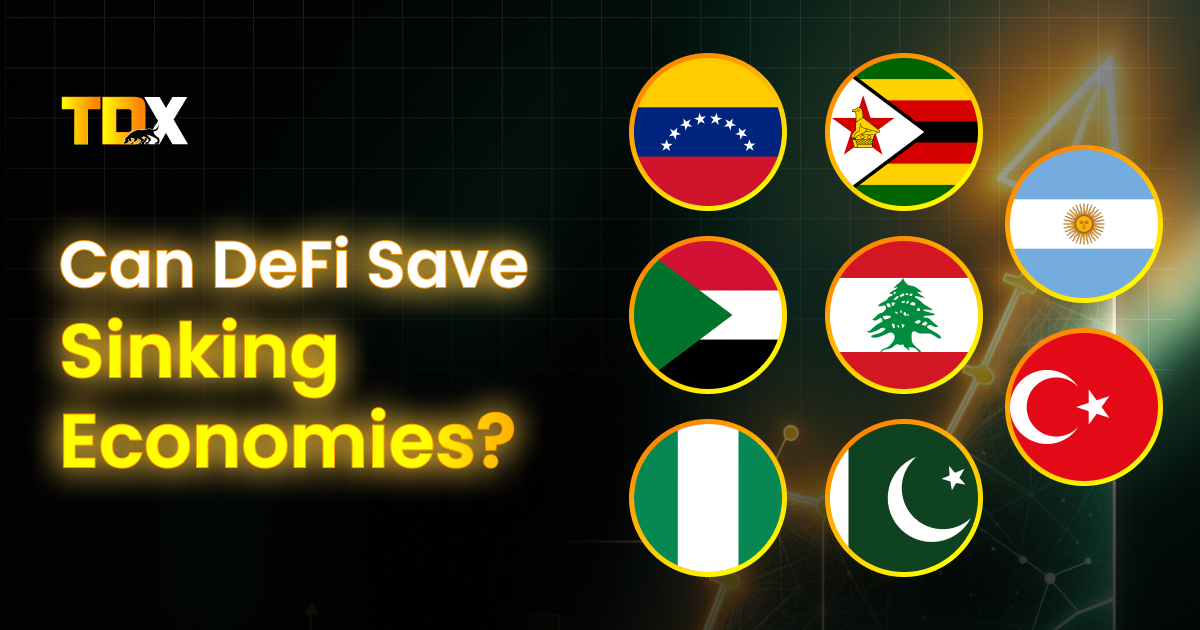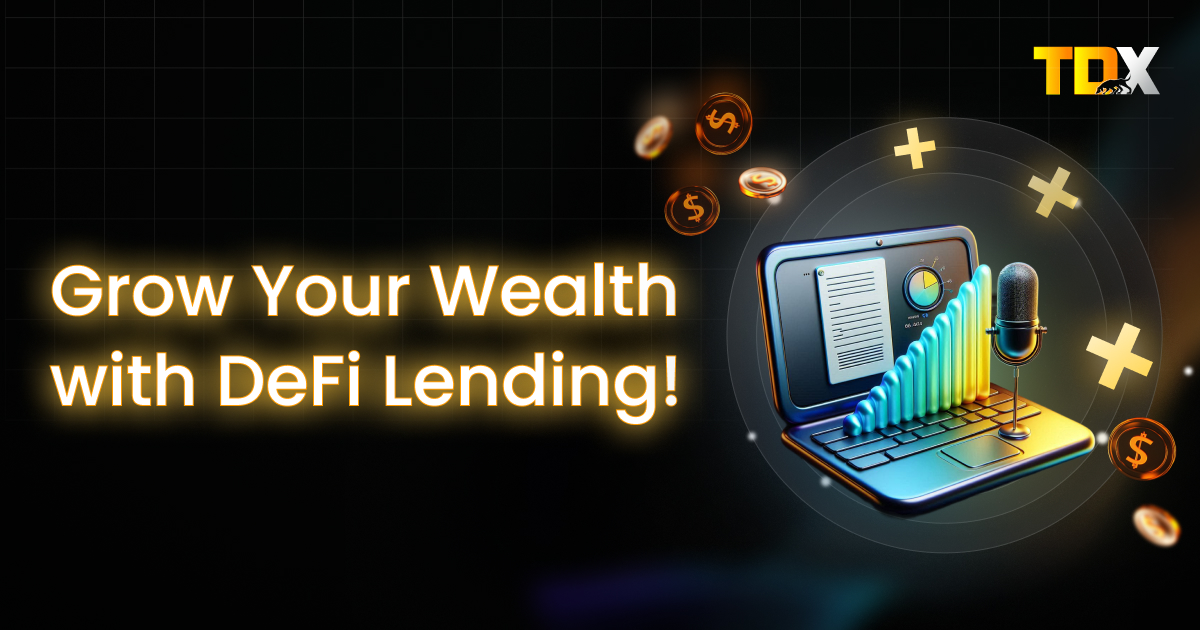 Back to blog
Back to blog


Yield Aggregators vs Fixed Deposit of India
For generations, Indians have trusted one investment: fixed deposits (FDs). If you walk into any Indian household, chances are someone in the family has money parked in an FD. Parents open FDs for their children’s education, retirees rely on them for a steady income, and an FD is many people’s first-ever investment because FDs are safe, predictable, and backed by the banks.
But the catch here is that Fixed Deposits and FDs feel safe, but their profits do minuscule work compared to the inflation rate. If one’s funds are locked in, early withdrawal means incurring penalties. Even the interest generated is not entirely yours because taxation consumes returns, greatly reducing expectations.
What if a smarter alternative was available to grow wealth with better profits, flexibility, and clarity? Yield aggregators, a ground-breaking innovation in decentralized finance (DeFi), are changing the investment paradigm of wealth creation.
Are FDs still the best option, or is it time to rethink where we park our hard-earned money?
Let’s dive in🚀
Understanding Fixed Deposits (FDs)
For many Indians, a visit to the bank is a routine part of managing their savings. A common scenario unfolds when a customer enters their local branch to explore ways to earn better returns on their idle funds. They approach the banker and request to move their savings into a Fixed Deposit (FD). Wanting to earn better returns than a regular savings account, they trust the banker to guide them through the process.
The banker explains the available options, suggesting different lock-in periods that offer the best interest rates. After a brief discussion, the customer selects a suitable term, ensuring their money is safely invested. The final step is completing the necessary paperwork, like KYC verification, signing forms, and confirming the deposit. This process is time-consuming, and you have to rely entirely on the bank to manage your investment.
Understanding Yield Aggregators
Investing no longer requires visiting a bank or dealing with paperwork. With yield aggregators, you simply connect your crypto wallet to a DeFi platform like TDX, deposit your crypto funds into a pool, and let automation take over.
Whether you’re at home or relaxing on a beach in the Maldives, you can kick off from anywhere
These DeFi platforms continuously optimize your investment by allocating your invested funds across different passive income strategies in DeFi, including but not limited to liquidity provision, lending, and staking. Confused about what these strategies mean? Let us break it down for you.
| Strategy | How It Works |
| Liquidity Provision | You deposit tokens into a liquidity pool on decentralized exchanges (DEXs) like Uniswap. Traders use this pool to swap assets, and in return, you earn a share of the trading fees. |
| Lending | You lend your crypto to borrowers through platforms like Aave or Compound. The borrower pays interest, and you receive earnings based on the lending rate. |
| Staking | You lock your tokens in a blockchain network to help validate transactions. In return, the network rewards you with additional tokens over time. |
Yield Aggregators vs. Fixed Deposits
Fixed Deposits provide safe, predictable returns but come with rigid terms that can limit your wealth growth. Meanwhile, yield aggregators offer a fresh approach to investing by smartly boosting returns with greater flexibility and transparency.
If you’re relying solely on FDs, you might be missing out on an opportunity to significantly grow your wealth. Curious about what you could be gaining? Let’s take a closer look.
Inflation Shield or Wealth Growth?
In December 2024, the inflation rate was 5.22% for India, while bank FDs had interest rates ranging from 3.00% and 7.25%. What does this imply? FD returns are lagging behind inflation, and so are many other products. This implies that your money does not grow considerably over time. In addition, the interest earned on FDs is taxable decreases your net returns, and makes it more difficult to beat inflation.
Case Study: If you put $1,170 (₹1,00,000) into a Fixed Deposit (FD) with the State Bank of India (SBI) for 5 years at a 6.50% annual interest rate, it would be worth approximately $1,600 (₹1,37,000) by maturity.
However, if the inflation rate remains at 5.22% annually, the nominal cost of goods and services that cost $1,170 (₹1,00,000) will increase to roughly $1,550 (₹1,29,000) over the period. This implies that your true purchasing power has increased by a mere $93 ₹8,000 , hence yielding a meager return of roughly 1.24% per year, which closely trails inflation.
Over the past year, FD rates have gone up, but still do not outpace inflation when considering post-tax returns. For example, SBI offers 6.5% on a 3-year deposit, but after tax, that drops to 4.63%. HDFC Bank, ICICI Bank, and Punjab National Bank also provide 7% interest on 3-year FDs, but post-tax returns are only 5%, which is less than the expected inflation rate of 5.4% for FY24.
In comparison, yield aggregators automate the investment activity to allocate funds toward high-yield opportunities to maximize returns. Instead of adhering to fixed rates, they dynamically adjust their investments to ensure returns that typically exceed the inflation rate by 2x.
Tax Implications on Returns
When the maturity period of an FD is over, investors expect to receive their full interest earnings. However, before the amount reaches them, a chunk is deducted as tax. If the total interest earned in a year crosses ₹40,000 ($480) (₹50,000 ($600) for senior citizens), the bank automatically deducts 10% as Tax Deducted at Source (TDS). And if the investor hasn’t provided their PAN, the deduction jumps to 20%. (Source: ICICI Bank)
For those choosing tax-saving fixed deposits (FDs), there’s an advantage: they are eligible for tax deductions up to ₹1.5 ($1,800) lakh under section 80C of the Income Tax Act. But these FDs come with a 5-year lock-in period, which means the money is not accessible until maturity.
While FDs promise safe returns, tax deductions, and restricted liquidity often make them less rewarding than they seem. (Source: ICICI Bank)
Yield aggregators, on the other hand, ensure full payout with no automatic tax deductions before payout. These platforms work within the domain of decentralized finance (DeFi) and, unlike traditional FDs, do not impose TDS deductions.
Investors have complete control over their funds and returns, allowing them to optimize their earnings without unexpected cuts. This makes yield aggregators a more efficient way to grow funds of the investors.
Lock-in period
Fixed Deposits (FDs) require an investor to set aside their money for a specific period, which may fluctuate from a few months to multiple years. The invested amount is ‘locked’ till maturity.
If an investor wishes to get their money before the maturity period, banks allow it but subject them to penalties, usually in the form of lower interest or early withdrawal charges. This limitation can be a challenge for some people who may need access to their money during emergencies.
The table below provides an overview of FD tenure and the highest interest rates offered by various Indian banks:
On the other hand, yield aggregators provide greater financial flexibility, and allow investors to withdraw their funds instantly without any penalties or lock-in periods.
While FDs penalize early withdrawals with low returns, yield aggregators let users to keep access their funds while continuing to earn yields. This makes yield aggregators a more attractive option for investors seeking unrestricted access to their funds without losing potential earnings.
Transparency
Fixed Deposits (FDs) operate within traditional banking systems, where banks do not disclose how they utilize deposited funds to generate returns. Investors receive a fixed interest rate, but the process behind it does not disclose how the bank invests the money and earns profits; it remains much like a concrete wall that blocks visibility. Depositors have no direct insight into where their money is being allocated or how much the bank earns from it.
On the other hand, yield aggregators offer complete transparency, functioning like a glass wall where every transaction is recorded on the blockchain. On-chain surveillance gives investors the opportunity to monitor their capital in real-time and see what DeFi protocols are in use, as well as the returns that are being generated due to the on-chain transparency.
This type of transparency allows users to fully understand how their funds are being wielded. Unlike Fixed Deposits, this type of investment is far less cumbersome with its precision and level of sophistication.
Yield
Loaded with risk, investors tend to like Fixed Deposits due to the stable and expected returns. The Interest paid on Fixed Deposits varies across different banks owing to age-old competition among banks as well as the duration of the deposit, and the category of the depositor, such as regular or senior citizen.
While providing security, suppose the interest on Fixed Deposits nowadays hovers around inflation, then it deprives real growth of wealth.
Shown below in the figure is the comparison of interest rates on Fixed Deposits offered by top Indian banks in 2024:
| Banks | FD Interest Rate for General Citizens Tenure (7 days – 10 years) | Senior Citizen FD Interest Rates Tenure (7 days – 10 years) |
| SBI | 3.50% – 6.50% | 4.00% – 7.50% |
| ICICI Bank | 3.00% – 6.90% | 3.50% – 7.50% |
| HDFC Bank | 3.00% – 7.00% | 3.50% – 7.75% |
| Axis Bank | 3.00% – 7.00% | 3.50% – 7.75% |
| Kotak Mahindra Bank | 2.75% – 6.20% | 3.25% – 6.70% |
Unlike FDs, yield aggregators in DeFi automate strategies to optimize returns by deploying funds across multiple lending and staking protocols. These platforms automatically adjust investments on a continuous basis in order to ensure maximum yields, usually exceeding traditional savings methods.
In order to illustrate better, here is a comparison of APY rates from different liquidity pools in use by yield aggregators. These pools automatically provide higher returns and do not necessitate that the user actively manage their investments.
| Liquidity Pools | Returns |
| cvxCRV (Convex Finance) | 13.17% (APR) as of 24 March 2025 |
| USDT (AAVE V3 – Ethereum) | 2.85% (APY) 30-day average APY |
| When investing in Fixed Deposits (FDs), there is typically a lock-in period of 6 months or more, offering returns between 3% and 7%. In contrast, stablecoins like USDT currently offer an APY of 2.85% over 30 days. If we estimate the 6-month APY is 17.1% (approximate) for USDT, it is likely to be higher than traditional FD returns, with the potential for growth in DeFi platforms. |
KYC requirements
Investors willing to open Fixed Deposits (FDs) must undertake a Know Your Customer (KYC) process, which involves submitting PAN, Aadhaar, and other address proof documents. Due to a lack of appropriate KYC validation, banks do not permit an individual to open an FD. This could be a lengthy process and adds constraints for those who do not have the requisite documents or prefer to be private regarding their investment. (source: ICICI)
KYC-less yield aggregators have made investment easier as users do not need to share personal information. Users may deposit funds instantly through TDX without identity verification and without the lengthy processes of filling out forms and documentation. This ease of deposit separates TDX from other platforms and expands the range of investment opportunities for private investors.
Bottom Line
Both yield aggregators and FDs enable users to capitalize on investment opportunities, but FDs are better suited for people who are low-risk investors. While FDs can provide low-volatility investment options with guaranteed returns, they may fall short of inflation, impose lock-in periods, and be taxed on the interest earned.
On the other hand, yield aggregators offer the potential of enhanced returns and improved flexibility and transparency, but come with market risks and are dependent on the growing DeFi ecosystem.
If you’re exploring new ways to grow your savings and are open to options beyond traditional investments, TDX yield aggregators can be a good place to start. This is designed to offer more flexibility and potentially better returns, especially for those comfortable with some market exposure.
Try TDX today and experience how yield aggregators can work smarter for your wealth.
No paperwork. No lock-ins. Just optimized returns.
👉 Start Investing Now with TDX
40,000 readers 🚀 are getting insights with our media
 Read on Medium
Read on Medium 

Article
“Is Ethereum dead?” This is a trending argument that is appearing in various crypto communities and media. Which is not…


Guide
Welcome to the beginner’s guide on Trust Wallet, MetaMask, and Exodus—three most common cryptocurrency wallets for managing your crypto assets….


Article
When Venezuela’s inflation hit 189.8% in 2023 [Central Bank of Venezuela, 2023], Maria’s life savings of 200 million bolivars (enough…


Article
Imagine of being your own bank, lending out your idle crypto holdings, and receiving high, guaranteed returns without any lag…


